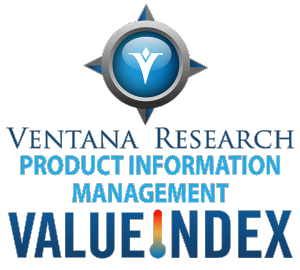Ventana Research defines product information management (PIM) as the practice of using information, applications and other technology to effectively support product-related processes across the customer, commerce and supply chain. As organizations increase the number and diversity of products and services they offer to customers and partners, they increasingly need to address limitations in the ways they manage and distribute  product information, including related attributes and content that describes the products. At the same time, competitive pressures require them to be able to incorporate large amounts of new content – video and images, for example – quickly while ensuring that the information presented to customers is accurate, operational processes run uninterrupted and timely data is available for business analysis. In an environment in which consumers, suppliers and partners use multiple channels to get to product information – including websites, kiosks, smartphones and tablets – it is essential that the organization always be able to present complete and up-to-date product information to inspire interest and facilitate purchases.
product information, including related attributes and content that describes the products. At the same time, competitive pressures require them to be able to incorporate large amounts of new content – video and images, for example – quickly while ensuring that the information presented to customers is accurate, operational processes run uninterrupted and timely data is available for business analysis. In an environment in which consumers, suppliers and partners use multiple channels to get to product information – including websites, kiosks, smartphones and tablets – it is essential that the organization always be able to present complete and up-to-date product information to inspire interest and facilitate purchases.
Product information management and the applications and technology that enable it are designed to help businesses provide the best possible product information to their departments and partners. To accomplish this, PIM software must support multiple business roles, from product managers and marketers to operations and manufacturing teams and to suppliers and those in the supply chain. Manufacturers, for example, need to share product information with distributors and with direct retailers or digital commerce providers on the Internet. For finance and operations departments, effective use of product information increases the efficiency of business processes and reduces the risk of using improper information that could reduce profitability and degrade the customer experience.
Effectively managed information about products is also essential to support a range of decision-making about products and services. Analytics applied to product information can yield a variety of metrics; they can indicate where product information is missing, where it needs to be improved, patterns of product usage and the meaning of feedback about them. In the preparation of product information, analytics can help profile and improve the quality of data and associated attributes to reveal where action must be taken.
Product information management is not the same as master data management (MDM), although the two sometimes are confused. This misunderstanding can distract businesses from focusing on what they need in a PIM application. MDM technology can ensure a single definition of data across the enterprise and improve the quality and integration of data across information systems. Many PIM systems have built-in MDM and now data integration and data quality processes to ensure there is only one defined master record for any given product.
It is important to realize that product information encompasses more than just the defined name and attributes of a product in a database; it includes all related information needed for reference or compliance purposes. Organizations should take care to understand the differences between PIM and MDM as well as how they can complement each other to inform decisions. PIM is essential to enable business units to manage their product-related processes themselves just as IT staff need MDM and integration tools to enable them to manage data throughout the enterprise.
ERP and supply chain applications including product life-cycle management (PLM) have fallen short in meeting the requirements for PIM, leaving many organizations with a lack of consistency in mastering and publishing product information both inside the enterprise and across the supply and demand chain. Commerce software also has lacked depth in providing PIM, a core ingredient for transacting business in products and services. Many commerce providers talk about the importance of focusing on the customer experience, for which effective PIM is a necessity. Web content management software also has a role, but its design is focused on dynamically generating content from a database and personalizing it for business. The lack of maturity in these software categories creates a role for PIM software that can interoperate across business processes and applications.
The goal of PIM is to establish a reliable single source of product information that can be shared across channels. Getting it right is not easy; our benchmark research shows that more than one-quarter of organizations have more than 10 sources of product information that they must integrate and manage efficiently. Half of participants in our research acknowledged that standardizing product information requires substantial effort, and only 27 percent said they completely trust their product information.
In their efforts to produce a reliable product record, most organizations use laborious, time-consuming methods: 37 percent develop custom code, and 45 percent rely on manual effort. One-third of all participants still depend heavily on spreadsheets to create their product records, and almost half (46%) depend on them somewhat. And nearly all (94%) spreadsheet users find major or minor errors in their records.
Processes and tools are available that can automate much of this work. If properly deployed, PIM systems can synchronize all attributes and definitions used in the identification, description, sales and fulfillment of products across all channels that customers, suppliers, trading partners and employees use. Some businesses are implementing PIM that has master data management embedded within it while others connect PIM to their IT organization’s MDM, which can help improve the consistency and quality of data across the enterprise. PIM and MDM projects typically incorporate tools for data discovery, profiling and quality verification to deepen understanding of the data, including relationships and associations among items. This knowledge can be essential for integrating content and data from multiple sources and defining master data.
MDM software by itself and without a PIM context is just for the data infrastructure; this in recent years has slowed its adoption as what is commonly called big data complicates data transformation and creates challenges in adapting to business applications. MDM vendors that continue to insist that their products address PIM often find the decline of interest challenging their market relevance. In contrast, independent vendors focused on PIM have enjoyed a growing market presence in recent years. But just focusing on PIM has its own challenges as  organizations look for simpler and more interconnected systems that utilize cloud computing and software as a service; many of these vendors have not moved rapidly enough to support these changes.
organizations look for simpler and more interconnected systems that utilize cloud computing and software as a service; many of these vendors have not moved rapidly enough to support these changes.
The benefits of using dedicated PIM technology can be significant. More than 40 percent of organizations said it can help eliminate data errors, improve cross-sell and up-sell opportunities and improve the customer experience through consistent product information. Yet our research indicates that most organizations have not adopted more capable systems: Only 27 percent use commercial software dedicated to PIM, although more than half (57%) said they will change their PIM system within 12 to 18 months. The latter finding in particular underscores the importance of having a reliable guide such as our 2015 Value Index for PIM which can help companies assess and evaluate vendors and products in this software category. I summarize our analysis in another analyst perspective to illuminate further how it can assist your efforts.
Regards,
Mark Smith
CEO & Chief Research Officer













